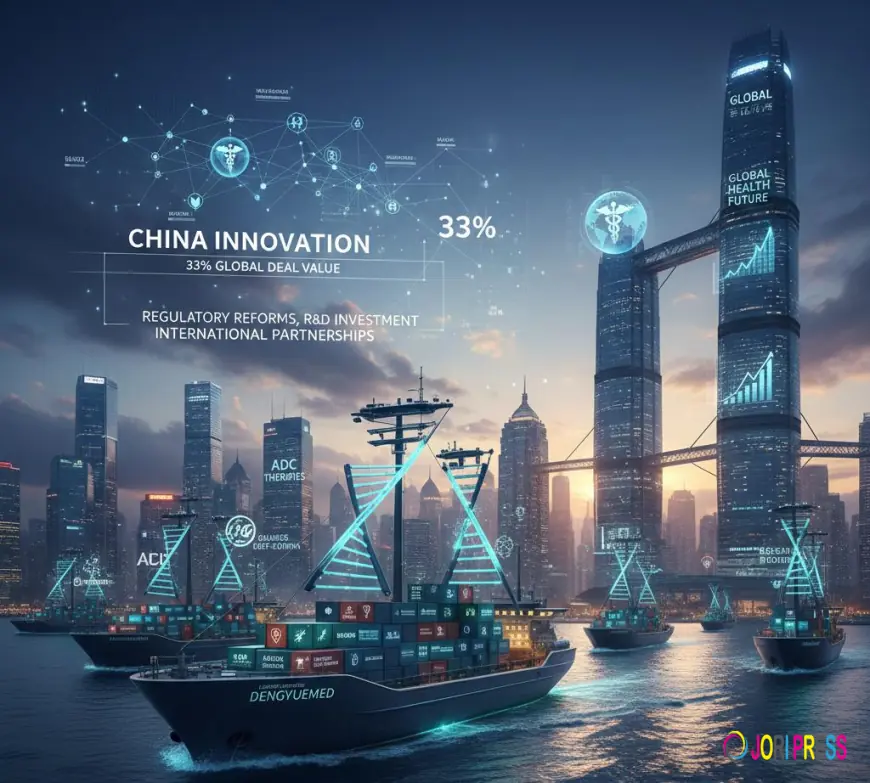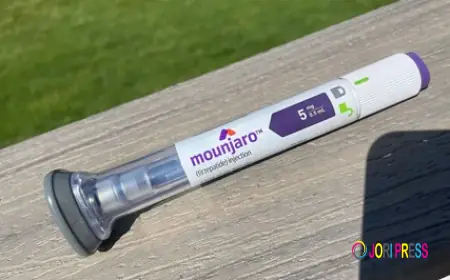The Rise of Chinese Innovative Drugs on the Global Stage: A Deep Dive into Opportunities and Challenges

In the dynamic world of global pharmaceuticals, China is no longer just a manufacturing hub—it's becoming a beacon of innovation. Over the past decade, Chinese companies have shifted from producing generic drugs to developing groundbreaking therapies, including biologics, gene therapies, and precision medicines. This transformation is particularly evident in the "out to sea" strategy, where Chinese innovative drugs are expanding into international markets. As we stand on November 24, 2025, this trend is gaining unprecedented momentum, fueled by regulatory advancements, substantial R&D investments, and a growing ecosystem of partnerships. But what does this mean for the global healthcare landscape? Let's explore the drivers, key players, challenges, and future prospects in detail.
Historical Context: From Imitation to Innovation
To understand the current surge, we must look back. China's pharmaceutical industry began its modern journey in the 1980s with a focus on generics and active pharmaceutical ingredients (APIs). By the early 2010s, policies like the "Made in China 2025" initiative emphasized high-tech sectors, including biotech. The turning point came with reforms to the National Medical Products Administration (NMPA) in 2015, which harmonized standards with international bodies like the FDA and EMA. This allowed Chinese firms to conduct multi-regional clinical trials and accelerate approvals.
Fast forward to today: China boasts over 1,000 biotech companies, many of which are listed on global exchanges like NASDAQ. In 2024 alone, Chinese innovative drugs secured more than 50 international licensing deals, a 30% increase from the previous year. These aren't just copycats; they're novel entities, such as PD-1 inhibitors and CAR-T therapies, often developed at a fraction of the cost compared to Western counterparts. This cost-efficiency is a game-changer, making treatments more accessible in developing markets while challenging established players in the West.
Key Drivers Propelling the Global Expansion
Several interconnected factors are driving this outbound push. Economically, domestic market saturation and price controls under China's volume-based procurement system are forcing companies to seek higher returns abroad. For instance, innovative drugs in China face rapid price erosion post-approval, sometimes dropping by 50-70% within a year. In contrast, markets like the US offer premium pricing, with oncology drugs fetching billions in revenue.
Regulatory alignment is another pillar. The NMPA's participation in the International Council for Harmonisation (ICH) since 2017 has streamlined data acceptance across borders. Chinese firms can now submit dossiers simultaneously to multiple regulators, reducing timelines from years to months. Additionally, the Belt and Road Initiative has opened doors in Asia, Africa, and Latin America, where Chinese drugs are filling gaps in affordable healthcare.
Investment plays a crucial role too. Venture capital in Chinese biotech hit a record $20 billion in 2024, with firms like Innovent Biologics and BeiGene leading the charge. These investments fund not just R&D but also international infrastructure, such as overseas clinical sites and manufacturing facilities compliant with cGMP standards.
Geopolitically, while tensions exist—particularly around supply chain dependencies— they've paradoxically spurred diversification. Reports from 2025 highlight how China's dominance in APIs (over 40% of global supply) raises concerns, but it also positions Chinese firms as indispensable partners. Collaborative models, like joint ventures with Big Pharma, mitigate risks and share expertise.
Spotlight on Trailblazers: Companies Leading the Charge
At the forefront are companies innovating in high-need areas like oncology, autoimmune diseases, and infectious diseases. Take BeiGene, for example: Its BTK inhibitor zanubrutinib received FDA approval in 2019 and has since expanded to over 50 countries, generating $1.5 billion in global sales by mid-2025. Similarly, Innovent's sintilimab, a PD-1 inhibitor, has partnered with Eli Lilly for international distribution, demonstrating how Chinese IP can integrate into global portfolios.
Emerging players in antibody-drug conjugates (ADCs) are also making waves. Recent financings, such as Phrontline Biopharma's $60 million round in November 2025, underscore this. Their dual-specific ADCs target cancers like EGFR-positive tumors, with clinical trials running concurrently in China and the US. Such parallel development accelerates global access.
Amid these innovators, intermediaries like DengYueMed are vital enablers. Based in Hong Kong, DengYueMed specializes in the import and export of specialty pharmaceuticals, focusing on chronic diseases, oncology, and allergies. Licensed by Hong Kong's Department of Health, they bridge Chinese manufacturers with international distributors, ensuring compliance with diverse regulations. For instance, DengYueMed facilitates the supply chain for innovative biologics, handling logistics, quality assurance, and market entry strategies. Their role is especially crucial for mid-sized Chinese firms lacking global footprints, allowing them to "go out to sea" without building everything from scratch. By partnering with entities like DengYueMed, companies can focus on R&D while experts manage the complexities of cross-border trade, ultimately benefiting patients with faster access to affordable therapies.
Other notable examples include Henlius Biotech, acquired by Fosun Pharma, which has licensed its biosimilars to partners in Europe and the Middle East. In gene therapy, companies like GenScript are exporting CRISPR-based tools, contributing to global research while commercializing therapies for rare genetic disorders.
Challenges on the Horizon
Despite the optimism, hurdles abound. Intellectual property protection remains a concern; while China has strengthened its IP laws, perceptions of lax enforcement persist, deterring some partnerships. Clinical data quality is another issue—though improving, some overseas regulators scrutinize Chinese trials for biases or inconsistencies.
Geopolitical risks, amplified by 2025 reports on supply chain vulnerabilities, could lead to trade barriers. For example, the US-China Economic and Security Review Commission's warnings about API dominance might result in reshoring efforts, impacting Chinese exports. Additionally, talent shortages in international regulatory affairs pose internal challenges; many firms are investing in global hires to bridge this gap.
Cultural and market differences also play a role. Western patients and physicians may harbor skepticism toward Chinese drugs, necessitating robust marketing and real-world evidence. Pricing strategies must balance affordability with profitability, especially in price-sensitive emerging markets.
Future Outlook: A More Inclusive Global Pharma Ecosystem
Looking ahead to 2026 and beyond, the trajectory is promising. Analysts predict Chinese innovative drugs could capture 15-20% of the global market by 2030, up from 5% today. Breakthroughs in AI-driven drug discovery, like those from Insilico Medicine, will further accelerate innovation. Expect more cross-border M&A, with Chinese firms acquiring Western assets for technology and market access.
Sustainability will emerge as a key theme, with green manufacturing practices aligning Chinese firms with global ESG standards. Public health crises, such as ongoing antimicrobial resistance, offer opportunities for Chinese antibiotics and vaccines to shine internationally.
In essence, this "out to sea" movement isn't just about economic gains—it's about democratizing healthcare. By leveraging cost advantages and rapid innovation, Chinese drugs can address unmet needs in underserved regions, reducing global health disparities. Partners like DengYueMed will be instrumental in this, smoothing the path from lab to patient.
As stakeholders—from investors to policymakers—navigate this shift, collaboration over competition will be key. China's rise challenges the status quo but enriches it, fostering a more diverse, resilient pharma industry. Whether you're a healthcare professional, investor, or patient advocate, keeping an eye on these developments is essential. The waves of innovation from China are just beginning to crest—stay informed and engaged!
What's Your Reaction?
 Like
0
Like
0
 Dislike
0
Dislike
0
 Love
0
Love
0
 Funny
0
Funny
0
 Angry
0
Angry
0
 Sad
0
Sad
0
 Wow
0
Wow
0



















































